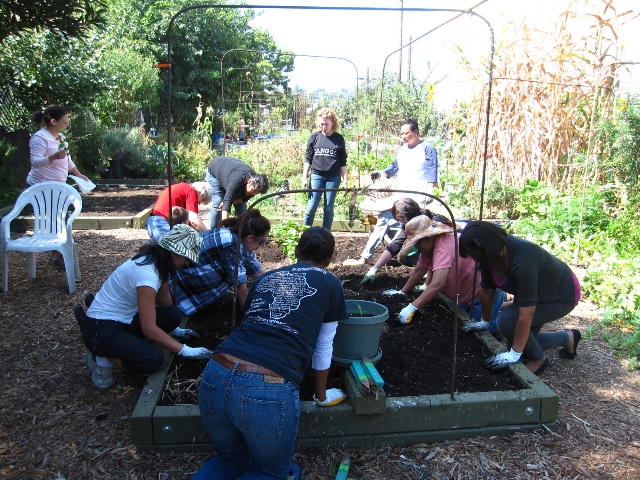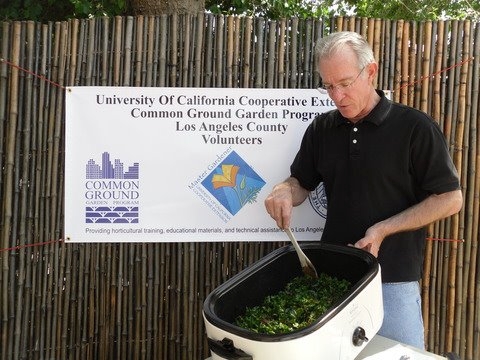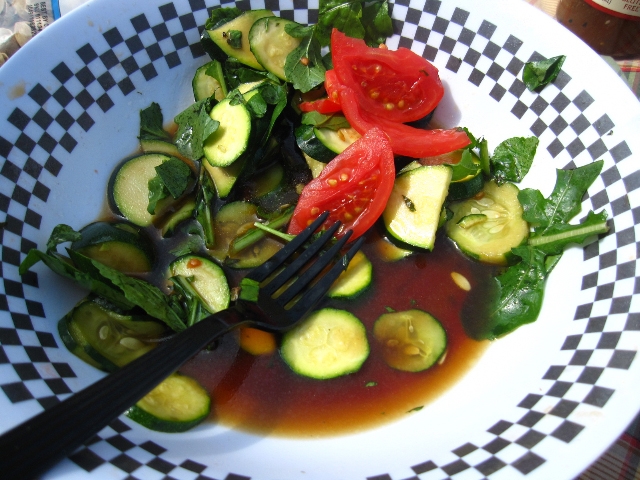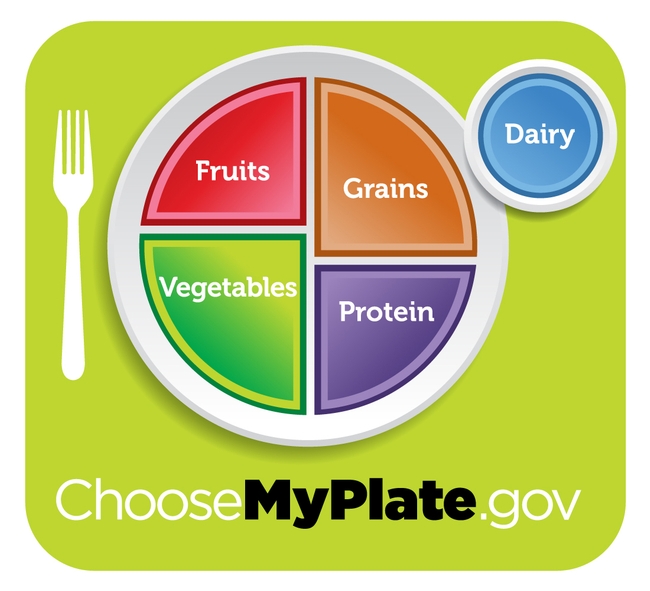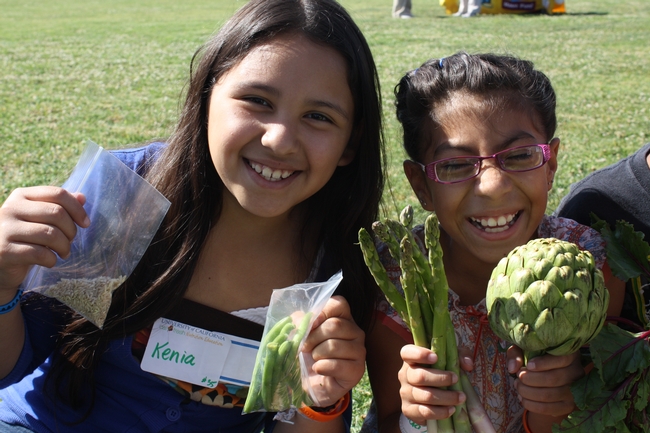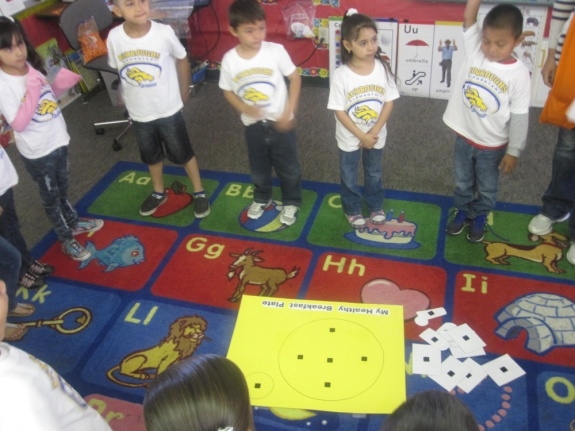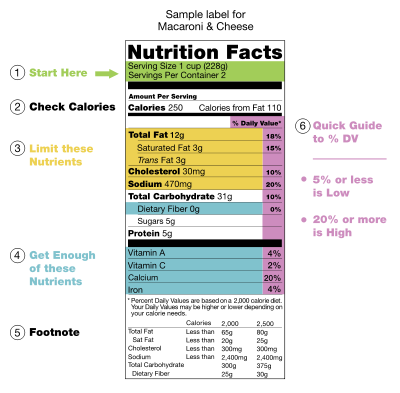Posts Tagged: nutrition
Insects, like restaurant customers, shape their wild plant menu
Restaurant patrons with their varied food preferences play a huge role in determining which food items are included on the menu. Now an international team of researchers, including a UC Davis plant scientist, is finding that plant-eating insects do much the same in the natural world, maintaining and shaping the genetic variation of their host plants in a geographic area.
The plant-grazing bugs accomplish this by forcing the plants to create diverse natural defenses to avoid being eaten, which in turn shapes the genetic makeup of the plants in a region. The researchers discovered this by studying aphids and the broccoli-like research plant Arabidopsis thaliana. Their findings provide the first measurable evidence that this selective process is driven, in part, by the pressure that multiple natural enemies exert on plants by forcing them to create diverse natural defenses to avoid being eaten.
“Our data demonstrate that there is a link between the abundance of two types of aphids and the continental distribution of Arabidopsis plants that are genetically different in terms of the biochemicals they produce to defend against insect feeding,” said UC Davis plant scientist Dan Kliebenstein.
His laboratory is examining the naturally occurring chemicals involved with plant defenses to better to understand their role in the environment and to explore their potential for improving human nutrition and fighting cancer.
Ecologists have theorized for decades that genetic change and variation within a plant or animal species is critical to enabling the species to survive changing environmental conditions like the appearance of a new disease or pest.
They have documented that nonbiological changes, such as variations in climate and soil, can exert pressures that cause genetic variation within plant species. However there has been little evidence that biological forces, including insects feeding on plants or competition between plant species, can lead to genetic variation within a plant species across a large geographic area.
In the new study, the researchers first mapped the distribution of six different chemical profiles within Arabidopsis thaliana plants across Europe, each chemical profile controlled by the variation in three genes.
The mapping revealed a change in the function of one of these key genes across geographic areas; the gene changed from southwest to the northeast.
The researchers suspected that two aphid species — Brevicoryne brassicae and Lipaphis erysimi — were the likely causes of the geographic variation. Both are abundant in the regions and feed heavily on Arabidopsis and related plants.
The scientists then tapped data collected by British researchers for nearly 50 years on fluctuations in aphid populations in Europe. They found that distribution of the two aphids species of interest closely mirrored the geographic distribution of the different chemical types of Arabidopsis plants. Like picky restaurant goers, one aphid preferred the southwestern chemical type while the other aphid preferred the northeastern chemical type.
The next step was to determine whether the similarity between the distribution patterns of the plants and the two aphid species was more than coincidental. To do this, the researchers observed what happened when the different aphids fed on five generations of experimentally raised Arabidopsis thaliana plants.
They confirmed that the plants were genetically adapting to the aphids, with each successive plant generation showing less damage from the feeding insects. A change in the genetic makeup of the plant populations specific to each aphid accompanied this trend — and the laboratory plants evolved in a way that tracked the geographic distribution of the two aphids and the plant chemical types.
The researchers also found that when faced with feeding by aphids, the faster-growing Arabidopsis plant types fared better in the laboratory, while the slowest-growing plant types actually went experimentally extinct.
“These data make it clear that even functionally similar plant-eating pests can affect the biochemical and genetic makeup of plant populations, playing a major role in shaping and refining the plant defenses in a natural community,” Kliebenstein said.
You’ll be able to read the complete report on this study, conducted with researchers in Switzerland, Denmark, England and the United States, will appear in the Oct. 5 issue of the journal Science.
Infusing nutrition education into an LA County vegetable garden initiative
Two weeks ago, my colleague wrote about LA County Cooperative Extension’s popular “Grow LA Victory Garden” initiative – Resources for beginning vegetable gardeners develop from LA initiative. This exciting initiative has achieved great success in LA County over the past two years by teaching more than 1,100 beginner gardeners how to grow their own vegetables at home through Master Gardener-led classes.
These classes impart an array of useful skills onto beginner gardeners, potentially translating into positive outcomes, such as improved diet and savings on groceries.
What to do with all of that home-grown produce?
Teaching novices how to grown their own food at home is one thing, but what are they going to actually do with all of that produce once it is harvested? Often a dilemma for beginner and experienced gardeners alike! This is where Fresh from the Garden comes into play.
With funding from the UC Agriculture Sustainability Institute - Sustainable Agriculture Research and Education Program, we were able to incorporate nutrition lessons and cooking demonstrations into the 4-week garden series by training Master Gardener volunteers to deliver Fresh from the Garden lessons into low-income community gardens. This is a resource that was designed to increase gardeners' knowledge of healthful eating habits, while emphasizing the health benefits associated with a vegetable-rich diet. Each Fresh from the Garden lesson features preparation and tasting of a healthy fresh vegetable recipe. Through these lessons, the beginner gardeners learned how to store, prepare and cook a wide variety of home-grown vegetables alongside the gardening instruction.
Reaping the benefits of vegetable gardening
We found that combined gardening, nutrition and cooking instruction encouraged novice gardeners to make important changes in their diets. By the end of the 4-week series, the participants said they were eating more servings of fruits and vegetables each day. What’s more, they were much more confident in their skills to prepare and cook home-grown vegetables. By the end of the 4-week series, 90 percent of participants surveyed said they could prepare and cook home-grown vegetables. This group was also very interested in trying different types of vegetables and all said they were willing to serve them to their families.
Through this project we have demonstrated promising results with the combination of gardening, cooking and nutrition instruction. We plan to continue the delivery of Fresh from the Garden in the coming year through the UC CalFresh Nutrition Education Program in coordination with the Master Gardener Program. CalFresh (formerly Food Stamp) participants are allowed to use their benefits to purchase seeds and plants for household consumption, which opens the door for exciting possibilities for this program!
Healthy classrooms
Remember when you were a kid and it was Tommy’s birthday and his mom brought those delicious cupcakes with the mounds of frosting to school? Picture with me all that syrupy sweet frosting in dazzling colors piled to the sky on top of a fluffy cupcake. While we are visualizing cupcakes, let’s do some cupcake math. If a teacher celebrates 30 students’ birthdays during the year, or about one per week in a nine-month school year, in addition to holidays like Halloween, Christmas, Valentines, and St. Patrick’s day, that can add up to a lot of sugary treats.
MyPlate teaches moderation, so there is nothing wrong with a sweet treat every now and again. However, there are many ways to have enjoyable classroom celebrations without so many sweets. Here are a few suggestions to make your classroom, or even your workplace, a healthier environment:
Holidays –
- Provide guidelines for parents about approved foods to bring. A short list with classroom policies and healthy examples can make a big difference in the types of foods that enter the classroom.
- Make foods look fun and festive, by adding seeds or nuts and making fun shapes with fruits and vegetables.
- Give alternative treats like bracelets, rings, crossword puzzles, maze games or yo-yo’s.
- For Halloween, celebrate with fun crafts instead of bags of candy; have students make masks and act out spooky plays.
- For Valentine’s Day have students write out nice comments about each classmate and pass them out during class. Instead of candy, consider treats like pencils, erasers and stickers.
Birthdays –
- Plan special games and activities, instead of food. Obstacle courses and relay races are a hit with all grade levels.
- Hand out low-cost treats like stickers, pencils, erasers, or other small items.
- Make a “VIP Birthday Kit” for the class with a birthday button, badge or crown.
- Allow birthday students to bring their favorite thing from home to show and tell.
- Let the birthday child be first in line for lunch or recess on his/her special day.
- Celebrate all the birthdays of the month on one day, and limit the food items to fruits, veggies and small cupcakes. Cutting cupcakes in half is a great way to reduce sugar and fat intake while enjoying treats in moderation.
Class rewards –
- Award with fun activities such as art, music and cooking demonstrations.
- Have the class earn special rewards: “Game Time” – children earn letters to spell “game time” and earn reading/story time, the chance to play educational board games or extra recess time.
- Lessons outside.
- Dancing to music in class or listening while working.
- Earn “Friday Free Time” or extended recess time.
- A smoothie party.
- A special field trip.
With the holiday season fast approaching, it’s never too early to transition students and parents to a healthy classroom environment. Remember, these tips are great for the classroom but also useful for work celebrations! For more information visit: www.choosemyplate.gov.
Tips adapted, in part, from the Network for a Healthy California Children’s PowerPlay! campaign.
Ever explore an artichoke?
Have you ever seen young students explore an artichoke for the first time? Their faces look puzzled as they wonder if this green spiny thing they hold before them is even edible. What about a kiwi? Eyebrows furrow in bewilderment when kids encounter this fuzzy fruit for the first time. Our favorite kiwi quote from a fifth-grade student: “This smells like dirt.”
All jokes aside, in Fresno County, nutrition education is becoming a priority for teachers. The UC CalFresh Nutrition Education Program has worked with over 950 teachers at over 80 schools throughout the county this school year. Our teachers are innovative, and continue to be outstanding in their approach to nutrition education!
While there isn’t enough space to recognize all outstanding educators, we are excited to share a few examples of the ways teachers are going above and beyond to teach students nutrition.
At Ayer Elementary, kindergarten teachers John Schnell, Donna Johnston, Catherine Uribe, and Nancy Patrick have made healthy eating and active living a priority. They actively take part in nutrition education and monthly tastings provided by UC Calfresh. They often bring in additional healthy foods for the students to sample. Understanding the importance of nutrition in a family-setting, Ayer teachers have invited UC CalFresh to partner in providing kinder parents important nutrition tips to get the year off to a healthy start.
Following a lesson taught by a UC CalFresh program coordinator at Balderas Elementary, Mrs. Nunez’s third-grade class created a collage of “Sometime vs. Anytime” foods. Mrs. Nunez went the extra step to reinforce the key concept of enjoying foods in moderation. Students took the information learned and made “anytime meals.” Students’ artwork was displayed in the hallway for all to see.
“We put our milk in, we take the milk out…and we shake it all about."
It's breakfast time at Burroughs Elementary. Mrs. Mata-Webb’s kindergarten class learned the importance of breakfast through song and dance. Students practiced building a healthy breakfast by including three of the five food groups at breakfast time.
Dedicated to ensuring the health of our students, food service staff in Fresno Unified have also gone the extra mile to help promote our adult nutrition education classes and workshops.
The educators and school staff spotlighted provide a glimpse of the endless examples of excellent nutrition education happening in Fresno County. Statewide, the UC CalFresh Nutrition Education Program is very fortunate to work with such amazing educators. At the University of California Cooperative Extension, we’re working through schools to teach kids good food habits and decision-making skills.
If you would like to have the UC CalFresh Nutrition Education Program at your school contact Shelby MacNab, (559) 600-7222 or smacnab@ucdavis.edu. For additional information, visit our website.
Food truth that we can eat
What we know about eating, not eating and overeating has been investigated by research universities and university-trained scientists since the 1920s. The Journal of Nutrition began publishing in 1928. Now 2.5 million inquiries each month probe a massive body of knowledge about the nature of our evolving physical and cultural relationship with food, with at least 30 more food and nutrition journals collecting and dispersing this science globally.
The result: Americans spend more time debating what to eat than at any other time in history. The firmly held beliefs of most adults about what should be eaten or avoided have origins in the history of this science. In spite of the intent of this research, and because it is frequently challenged, people are understandably skeptical or easily recruited to the next food fad.
As a food science graduate and later as a campus writer, I have worked smack in the center of a leading food research university for more than a decade. This vantage point allowed me to follow the path of these rivulets of research as they flow through scientific journals and later become diluted by commercial interests. They readily dribble to the media without interpretation or the full context of their intended purpose.
Perhaps the most sacred form of long-term research evidence we follow is the food label, an abbreviated version of truth that empowers our choice to follow our closely held beliefs. University research and methods also indirectly determine what will appear on labels in the future. I have long admired the pragmatic ethics of Barbara Schneeman, who taught me as a professor of nutrition and college dean before going to the U.S. Food and Drug Administration to direct the redesign of nutritional food labeling (and other regulations).
Meanwhile, efforts in the national “food court” to hold advertising accountable to the truth are gaining momentum. In spite being misused, universities remain the best source of food truth. This assumes that faculty remains free to challenge the truth and that research funds are available to validate it. Unfortunately, funding for food research is shrinking along with the federal budget, and the federal agencies responsible are seeing an increase in applications for what remains. This week, the National Research Council will release their report , Research Universities and the Future of America: Ten Breakthrough Actions Vital to Our Nation's Prosperity and Security. The report will attempt to list the top 10 actions that Congress, the federal government, states and research universities could take to assure that American research universities help the U.S. “compete, prosper, and achieve national goals for health, energy, the environment, and security in the global community.” Those of us who are watching can only hope that the food truth needed to challenge nutritional hype will be on that list.



